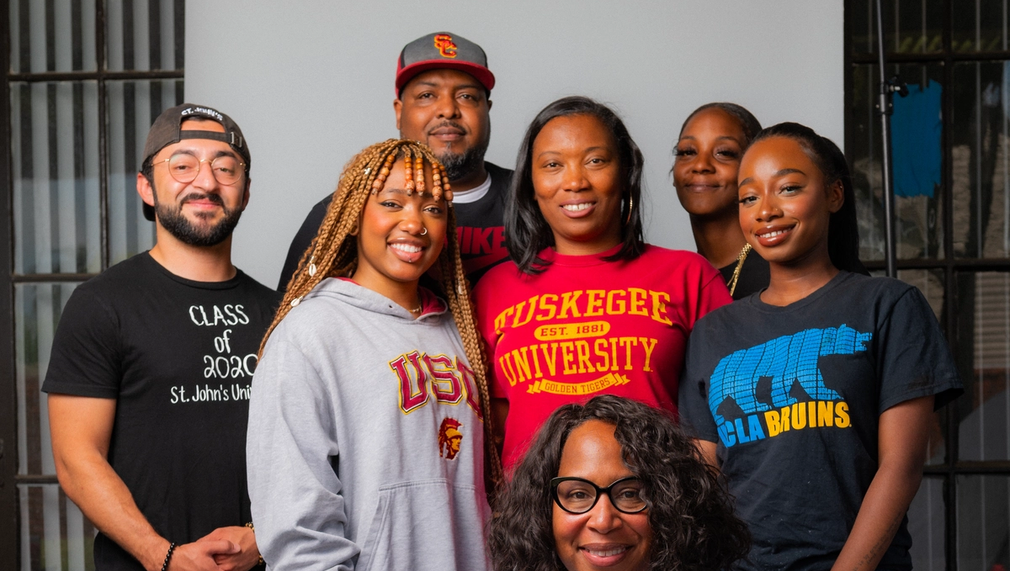Hope Starts Here
Grant funds from LA2050 Grants Challenge will help us bolster the resiliency of system-impacted young people through basic needs, housing, and navigation services.

What is the primary issue area that your application will impact?
Support for Foster and Systems-Impacted Youth
In which areas of Los Angeles will you be directly working?
South LA
South Bay
Antelope Valley
In what stage of innovation is this project, program, or initiative?
Expand existing project, program, or initiative
What is your understanding of the issue that you are seeking to address?
Many children with a history of abuse or neglect never reunite with their families or find alternative survival means. They face disproportionately higher rates of unemployment, lower educational attainment, incarceration, dependence on public assistance, substance abuse, nonmarital childbirth and even coercion into human sex trafficking and gangs. The lack of a "safety net" for these young people mean they truly struggle to scrape by often creating a more burdensome and larger costs to society than if a much smaller, upfront investment had been made to intervene in their period of crisis. With limited ways to earn a living through employment and access to resources to subsist, the need to offer a-helping-hand to foster and system-impacted young people is paramount more than ever. They are more likely to fall into poverty, as they have fewer or no savings to fall back on in the face of a loss or a drop in income.
Describe the project, program, or initiative this grant will support to address the issue.
SOH is set apart from other foster and system-impacted serving organizations because of our culturally responsive Comprehensive Youth Development, Trauma-Informed, and Critical Race Theory models are multi-dimensionally designed for communities with large populations of Black and Latin young people. Our affirming and hopeful environments centered on character-building and identity address barriers for young people in a crisis and equips them with tools for managing crisis situations in their transition into adulthood. For example, young people have traveled internationally to Africa for leadership development focused on learning, mobilizing, and organizing around advancing racial equity and understanding the intersectionality of South Los Angeles and Southern Africa. We are undergoing a similar trip to southern states this summer for a "West to South Civil and Human Rights Encounter". Through traveling abroad, they gain skills and lifelong experiences that give them a leg up in their desired professions and within their network circles; and prepare them for completing their higher education goals and furthering their career. Furthermore, our basic needs, housing, and other support services provides them a sanctuary to have their critical needs met while also engaging with a loving supportive team of caring people to assist in bolstering their resiliency and achieving their promise and potential.
Describe how Los Angeles County will be different if your work is successful.
Last year, SOH served 1,011 young people of which 70% were foster and system-impacted young people who had histories of child welfare and juvenile justice-involvement as well as trafficking and domestic violence. Our village safety net changed their lives because they had a sanctuary that gave them the tools and a strong support system to thrive. Our success is Los Angeles' and theirs too. For one, foster and system-impacted youth develop protective factors, such as, self-esteem, problem-solving and coping skills, academic development, and community connections to prepare them for life. They know that they don't have to face life alone and that resources in their home communities are a life support and safety net for them to fall back on when needed. Finally, they have agency to manage the physical and emotional difficulties; garner "life lessons"; practice financial wellness, prepare for careers, complete educational goals, and give back by being productive citizens. .
What evidence do you have that this project, program, or initiative is or will be successful, and how will you define and measure success?
The ultimate goal of SOH's programs is to bolster young people's resiliency and improve the overall well-being as well as give them agency to determine their life's destiny. We measure young people's connections and placement into stable housing to focus on other areas of their lives that will lead to self-sufficiency: direct assistance crisis resolution services that stabilizes the household and/or removes a barrier that put their housing, education or employment in jeopardy: (3) navigation to community resources for social, emotional, and physical well-being by helping them draw upon protective factors such as, education, employment, self-regulation, mental health resources and healthy relationships. An example is when co-parenting young households with histories of system-impact receive transportation assistance to move from public transportation to a reliable vehicle for employment retention, making it easier to get to multiple locations for childcare, class, and training.
Approximately how many people will be impacted by this project, program, or initiative?
Direct Impact: 400
Indirect Impact: 1,200